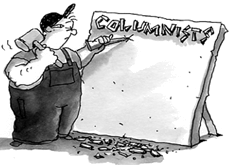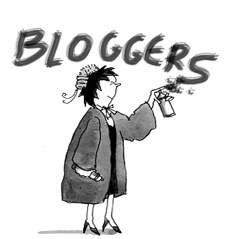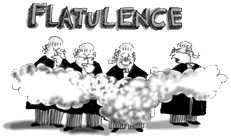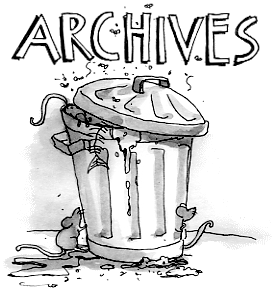Something for true believers
 Book review •
Book review •  Saturday, July 20, 2024
Saturday, July 20, 2024 Things you should know about the Australian Labor Party Nick ... History ... Tensions ... Triumphs ... Splits ... Where are the working class MPs? ... Braham Dabscheck reviews Dyrenfurth & Bongiorno's A Little History Of The Australian Labor Party ... Rats in the ranks
 Formed in 1891, the Australian Labor Party is one of the oldest labour parties in the world and the oldest continuous political party in Australia. Yet, write Nick Dyrenfurth and Frank Bongiorno, most Australians know little about its achievements and history.
Formed in 1891, the Australian Labor Party is one of the oldest labour parties in the world and the oldest continuous political party in Australia. Yet, write Nick Dyrenfurth and Frank Bongiorno, most Australians know little about its achievements and history.
"That a nation knows so little about its oldest continuing political party, the first of the type to form colonial, state or national government anywhere in the world, is a mark of a wider civic ignorance. In this spirit, we hope that this book will help Labour Party members and supporters, outside critics, students of history and politics, and journalists with the task of explaining the everyday theatre of Australian public life, to understand the manifold ways in which today's ALP is the product of a rich history."
An introductory chapter briefly examines the insights of a few writers who have tried to distill the essence of the ALP's mission, including Albert Metin's Socialism Without Doctrine (1977); Bede Nairn's Civilising Capitalism: The Labor Movement in New South Wales 1870-1900 (1973); and Robert Catley and Bruce McFarlane's (From Tweedledum to Tweedledee: The New Labour Government in Australia: a critique of its social model (1974), which found it difficult to distinguish the ALP from conservative mainstream parties.
Dyrenfurth and Bongiorno also refer to Ben Chifley's notion of "The Light on the Hill" and to Vere Gordon Childe's claim, made over 100 years ago, that the party had "degenerated into a vast machine for capturing political power ... [and] did not know how to use that power ... except for the profit of individuals".
The authors adopt a descriptive chronological approach in examining the "rich history" of the ALP and provide information on major developments that have occurred in Australia since the late nineteenth century - including world wars; economic problems; social discord; disasters such as bush fires and COVID; and the operation of the ALP at the federal, state and territory level.
 Vere Gordon Childe: ALP's degeneration
Vere Gordon Childe: ALP's degeneration
They also examine tensions within the ALP, the incessant jockeying for influence and power, and the ALP's interactions with other political parties and institutions in Australia.
Basic information is provided on election campaigns and their results, both federal and state. Broad outlines are also provided of the policies and programmes adopted at both levels, especially following a Labor victory.
Dyrenfurth and Bongiorno basically employ a "Great Man [and occasional Woman]" view of history in focusing on the achievements of party leaders, especially those who have become Prime Ministers, Premiers or Chief Ministers.
A list of these is provided at the beginning of the book and their achievements celebrated. It would not be unfair to describe the book as an exercise in low-level hagiography.
The ALP was formed by unions to enhance the welfare of white workers. Dyrenfurth and Bongiorno highlight how the ALP was historically racist (opposed to indigenous Australians and Asian, especially Chinese workers) and sexist with women playing a minor role in the party and its thinking on policy matters.
Given it was initially the party of the working man, the ALP was subject to attempts by class-based thinkers (socialists, communists and Marxists of different hues) to steer Australia to some imagined utopia.
In the 1940s and 1950s, there was pressure from another messianic group, the Catholic Social Studies Movement which resulted in a split in the party on sectarian (religious) lines.
The party also received support from "social progressive" middle class and educated persons with less ambitious goals to reform and make better the operation of society in the here and now.
And there were those who wanted support from government to improve amenities in their local communities to improve the quality of their day to day lives.
The federal ALP experienced three major splits that reduced it to electoral impotence in the first 60 to 70 years of its existence.
 W.M. Hughes: WWI Labor rat (Jim Case, The Worker)
W.M. Hughes: WWI Labor rat (Jim Case, The Worker)
This occurred during World War I over conscription for military service which saw "Labor Rats", led by Billy Hughes, not so much as abandon ship but take an axe to it by joining with conservative forces to form the Nationalist Party; the depression of the 1930s with a different group of rats bringing the axe out of storage and joining conservatives to form the United Australia Party; and in the 1950s, other rats and a large number of rank and filers, this time, forming their own party, the Democratic Labor Party. Splits also occurred in New South Wales (Lang Labor) and Queensland.
While the party has always been racked by internal disputes over which policies to pursue, whether to be cautious or more adventurous, and who to back when individuals are jockeying for power within the party (Bob Hawke v Paul Keating, Julia Gillard v Kevin Rudd) it has not been subject to the same splits as occurred in the first half of its history.
The reasons for this are not canvased by Dyrenfurth and Bongiorno, given their descriptive chronological approach.
A possible explanation could be a change in the way the party was organised. The election of Gough Whitlam's government in 1972 saw reforms of the party that required power sharing between factions, moving away from a winner take all approach. Sharing the spoils seems to have worked in toning down tensions.
More generally, A Little History Of The Australian Labor Party would have benefitted from a more thematic and conceptual approach to give a better understanding of the major issues in the ALP's rich history.
 Gough Whitlam (Clifton Pugh)
Gough Whitlam (Clifton Pugh)
At a minimum, a thematic chapter could explained the general role of political parties, provide information on how the party is organised and operates, and changes to the relationship between its different parts and elements.
A party by definition is a political institution and it is difficult to understand why Dyrenfurth and Bongiorno have eschewed employing insights from political science which would have enhanced their ability to provide a more conceptual and nuanced understanding of the history of the ALP.
Dyrenfurth and Bongiorno lament that those who find their way into parliament nowadays can rarely be described as working class, unlike in the early decades of the party's formation. Ben Chifley, who was originally a train driver from Bathurst, New South Wales, became prime minister from 1945 to 1949.
While in recent years the ALP has been successful in having a high proportion of female members of parliament, in cabinets and as premiers and even a prime minister, worker representatives have been increasingly overtaken by the educated middle class and the professions.
This process of professionalisation has been intensified with an increasing proportion of representatives having had careers as political operatives - the ALP is not alone in this respect.
It might be instructive to recall Vere Gordon Childe's observation of the motivation of party apparatchiks.
Dyrenfurth and Bongiorno have provided bits of information on the history of the ALP in the broader context of developments in Australia. They adopted an historical descriptive approach and, as a result, the book lacks coherence where broader issues are brought together and analysed.
 Chifley: Light on the Hill
Chifley: Light on the Hill
This is a book for true believers who may enjoy reading short snippets of vaguely remembered major events. Those who have no, or only limited, knowledge of the ALP may find it difficult to discern a clear narrative and an understanding of the unfolding of events.
It is also doubtful if the book would be of much use to students. Those who run courses on Australian history and politics would presumably use sources which examine issues in greater detail and provide a more conceptual understanding of the forces that govern the country.
Hopefully, in the not too distant future, someone will have the tenacity and skill to produce A Big History Of The Australian Labor Party. We also need big histories of Australia's other major political parties.
Nick Dyrenfurth is the executive director of the John Curtin Research Centre. Frank Bongiorno is a Professor of History at the Australian National University and a Distinguished Fellow at the Whitlam Institute.
Braham Dabscheck is a Senior Fellow at the Melbourne Law School at the University of Melbourne who writes on industrial relations, sport and other things. See his Australian Industrial Relations In The 1980s (Oxford University Press, 1989) and The Struggle for Australian Industrial Relations (Oxford University Press, 1995) for an in depth analysis of events during the prime ministerships of Bob Hawke and Paul Keating.
A Little History Of The Australian Labor Party, New South Press Publishing, Sydney, 2024, PB xviii + 286pp, $27.99










Reader Comments